The content of the article
Eggplants are capricious and thermophilic members of the nightshade family. To get a hardy seedling that can give a high yield, it is not enough to put the seeds in a pot with the soil, and water from time to time. Culture requires careful maintenance, adherence to temperature, and an abundance of light.
Seed: Selection Criteria
Seeds recommend using fresh. Give preference to species that easily adapt to the characteristics of the local climate. On the package, it is necessary to indicate in which regions the yield will be high, and in which the plant dies, or will give birth poorly.
Material that is more than 4 years old is being checked: 10 soak seeds, and if at least from 5 shoots sprout, you can plant.To improve the germination, the billet is poured into a thermos, and heated at a temperature of 50º for 2 hours.
Natural selection
Not all seeds are able to become seedlings. Seed material must be immersed in a 5% brine solution and vigorously stirred. Infuse for 5 minutes: empty shells will float to the surface, which will be drained together with water. At the bottom there are healthy specimens. To sort seeds, having thrown out damaged and too small.
Rinse the remaining billet in hot water: the temperature of the liquid should be in the range of 50-52 degrees. Such a procedure will help to wash off the essential oil from the seeds, which makes germination difficult. Hold the seed in a hot liquid for half an hour and dip it in cold water for 3 minutes.
Preparatory activities
Seeds from bags, which manufacturers process with special mixtures, do not need additional disinfection. Homemade varieties obtained from a neighbor or grandmother, it is recommended to soak in manganese or other solution that will kill the infection.
Disinfection options
- 100 ml of ordinary water will need 3 ml of pharmacy peroxide.Heat the solution to 40º and dip a bag of seeds in it for a maximum of 10 minutes.
- Dilute potassium permanganate in liquid to obtain a rich pink, with a purple tint, shade. Put seed in solution for 20 minutes, then rinse thoroughly in distilled water.
Top dressing
The plant will yield more yield if, at the initial stage, natural and chemical means are used to feed the seeds with useful components. You can take solutions:
- sodium humate;
- Ivina;
- nitrophos;
- succinic acid;
- heteroauxin.
In a liter of liquid, you need to dilute about 5-6 g of top dressing. The dosage indicated on the packaging, or you can check with the seller. An alternative to solutions is ordinary wood ash or “Ideal” fertilizer, which is already sold.
Tie the seeds in a gauze bag and immerse them in the prepared liquid for 25–40 hours. The solution must be warm, because in a cold seed, it starts to rot, or perishes.
Tip: Some gardeners are used to feed the aloe juice. Cut two thick sheets and place in the refrigerator for 6 hours. Get it and grind. With the help of gauze squeeze the juice, and put it in the future eggplant.
Germination
Treated from infections and fertilized seeds to shift on a saucer, covering it with a damp cloth, or placed on the bottom of a stainless container. Cover with a rag, put next to the battery. Constantly add warm water. It is necessary that the temperature inside the tank does not fall below + 20º, otherwise the eggplants will not turn.
To speed up the germination of seeds, you can add to the water preparations "Novosil" or "Baikal". Alternative - slurry or willow decoction.
Tip: Do not put the seeds in gauze bags. Sprouts are initially weak and thin. They get stuck between threads, tear off or get damaged. Then the germination rate decreases, and the seedlings become weaker and more capricious.
The optimal time for disembarking
Planting seeds in pots is recommended in early February. The seedling will have time to grow and grow strong until mid-May, when the garden warms up, you can transfer the young eggplants to the open ground.
Milk pots, drawers and bags
In specialized stores you can find peat pots and seedlings for growing seedlings, but the majority of summer residents prefer to do with improvised means.If the selected eggplant variety does not belong to the category of capricious and capricious, wooden boxes, plastic cups or milk bags are suitable for its cultivation.
Plants that require careful care, it is recommended to place in a cartridge with a capacity of 50 ml cells.
Preparation of the base
Land can be gathered from the garden by adding some sand. Both components are recommended to first ignite in a baking sheet or pan, and then pour boiling water over it. Careful heat treatment will save the eggplant root system from fungus, parasites and various infections.
Soil options
- For a part of the turf land, you will need 2 parts of ventilated high-grade peat and humus, which will feed the seeds.
- An alternative variety consists of stale sawdust brown tint. To the part of this component add 4 parts of humus and 2 lowland ventilated peat, which should be black.
- You can limit yourself to fertile black soil, ready-made soil, which is sold in stores specifically for seedlings, and coarse or fine-grained sand. Mix loose substances in equal proportions, if desired, add vermiculite.
- In some cases, enough peat and sawdust, which is watered with a solution for growing seedlings.
In order for eggplants to be strong, it is recommended to add nutrients to the main mixture. On the bucket basics will need:
- wood ash (60–70 g);
- urea (5–7 g);
- superphosphate (20 g).
Landing details
The soil must be warm, degrees 25-28, otherwise the seeds will not grow.
Crates
The first layer is drainage, so that the eggplant root system receives oxygen. The second is the ground, 8 cm high. Moisten, and gently stick the seeds, deepening them by 1.5 cm. The interval between future bushes is from 5 to 7 cm.
Cassette
In the cells, covered with earth, put on 1 seed. Top layer of soil 0.5 cm thick. Cover with thick glass and on the windowsill.
Cups
Such a landing option is suitable for peat and plastic pots, milk bags or sour cream. Bottom must be holes that can be made with a needle. Pour a layer of small pebbles or rubble. Above - a mixture of soil with additives.
Stick the seeds to a depth of 1.5 cm, 3 pieces per cup. When the seedlings come, leave the strongest and healthiest sprout, carefully pry the rest.
Tip: On some shoots, shells remain that prevent eggplant from growing.To remove a kind of cap, it is necessary to moisten sprouts with water 4–5 times a day. When the film softens, it is hooked with a needle, and removed.
Seeds that are in the soil, do not need light, only in the heat and the absence of drafts. Cells or pots covered with black film, attracting the sun's rays, or glass. Removed after 6 days, when the first green shoots appear in the ground.
Proper care
Land after germination can not be watered so as not to flood the plant. If the soil is very dry, it is moistened with a spray gun. Spray 2-3 times a day. Watering eggplant begin on day 3. Water is added to the pots every 4–5 days. If the soil dries quickly, you can often.
Tip: For watering melt or rain water is useful. In extreme cases, you can use water supply, which is defended for at least a day.
The seedlings have enough sunlight, which she receives, standing on the windowsill. Eggplants are advised to place on the windows that overlook the eastern part. If there is little ultraviolet light, you can use phytolamps or fluorescent ones.
The distance from the pots to the lighting device is 50 cm.Schedule: from 7–8 am to 7 pm.
Comfortable temperature
The room should be from 17 to 25 degrees Celsius. If the temperature drops to 15, eggplant growth slows down. From + 13º and below the plants simply die.
The film or glass is removed after the appearance of young shoots. In the first week, raise the temperature to + 17º during the day, at night, lower to + 14–15, but not lower. This mode contributes to the development of the root system.
In the second week, the daytime temperature should vary between 25 and 27º, and during the night it should not rise above +15. Eggplants are hardened in such conditions, and prepared for the natural environment. If you constantly keep the seedlings warm, after entering the open ground, it can freeze at night and fade.
After 14 days, the plants can be moved to a room where the temperature does not rise above +18. The main thing is that there are no drafts in the room, otherwise the seedlings weaken and fade.
Feed or not feed
If the eggplant is of normal quality, you can not additionally feed them. Does seedling look weak? It is worth trying to revive it with the help of special tools.
For the first time, it is advised to feed plants for 7–10 days after germination, before picking. In 10 liters of irrigation fluid dilute 20 g of Crystal Yellow. Natural alternative - mullein. Superphosphate or urea may be used. The tool is added to the liquid for irrigation in small quantities to get a weakly concentrated solution.
Water with fertilizers is poured at the root, in small portions, so that it does not stand in the ground.
The second feeding is recommended to be held after 10 days. You can take a solution with urea or superphosphate, or buy a special tool Crystal Special.
Some nuances of growing eggplant
- The box with the seedlings must be rearranged and turned to the sun by the other side every 7 days, otherwise the seedlings will stretch out and become too thin and fragile.
- Recommended 2 weeks before planting in open ground to make eggplants on the balcony, or leave next to the wide open windows. The temperature of the outside air should not be below +15.
- After 50 days, when the seedlings will have 6 full leaves, it is transplanted into separate pots with a diameter of at least 20 cm.
- To protect the first shoots from diseases, you can pour the young eggplants with a weak solution of potassium permanganate.
- You can disinfect the soil in a water bath: lay gauze with a sieve, fill in the workpiece, and hold for 30 minutes.
- Plants that have reached a height of 25, a minimum of 20 cm, with at least 7 leaves, can be planted in open ground.
- Eggplants are recommended to be treated with blue vitriol (0.5% solution) 5 days before planting, for the prevention of fungal infection.
The representative of the family solanaceae requires constant care, does not tolerate low temperatures and lack of light. Many gardeners do not like eggplants because of their whimsicalness, but if you follow the recommendations, regularly feed the seedlings, and take care of them, the plant will thank the rich and healthy harvest.
Video: preparing seeds of peppers and eggplant for sowing

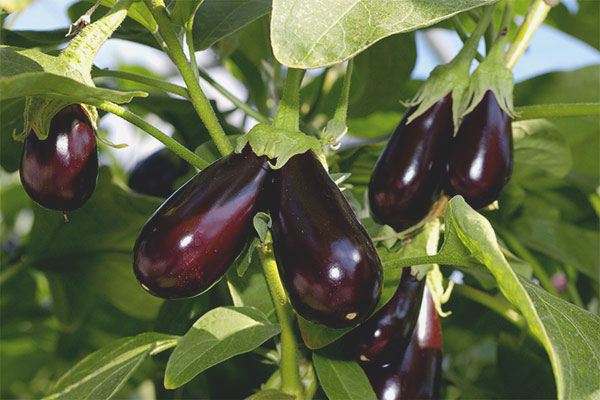
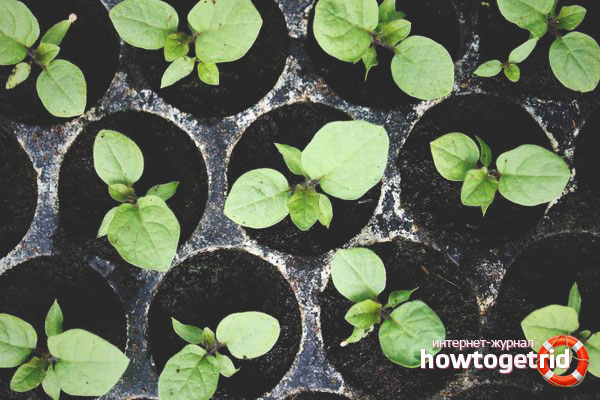
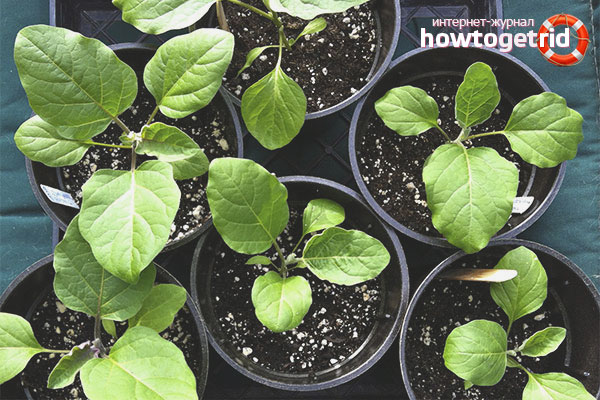
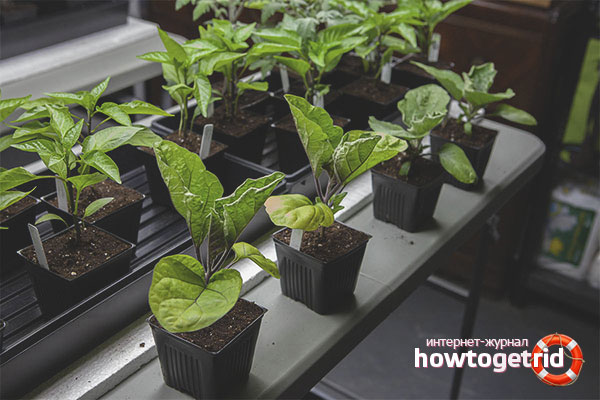
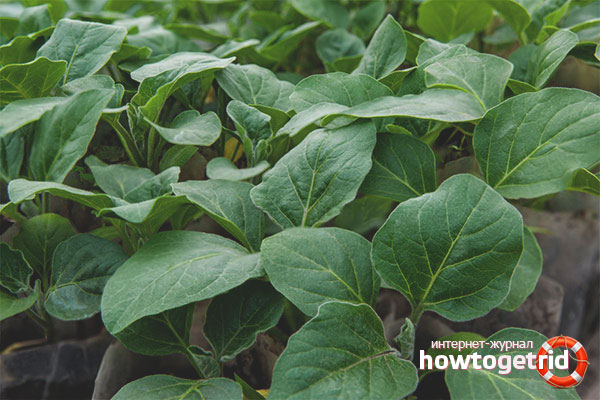

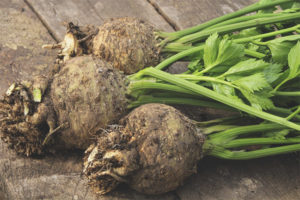
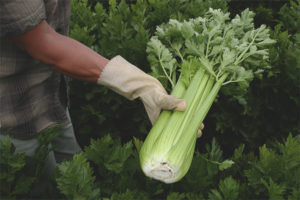

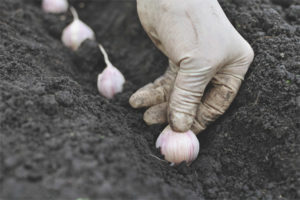

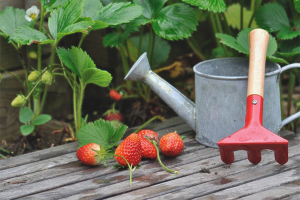

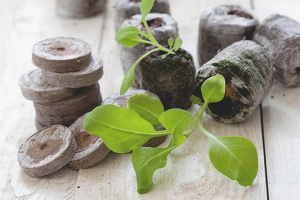
To send